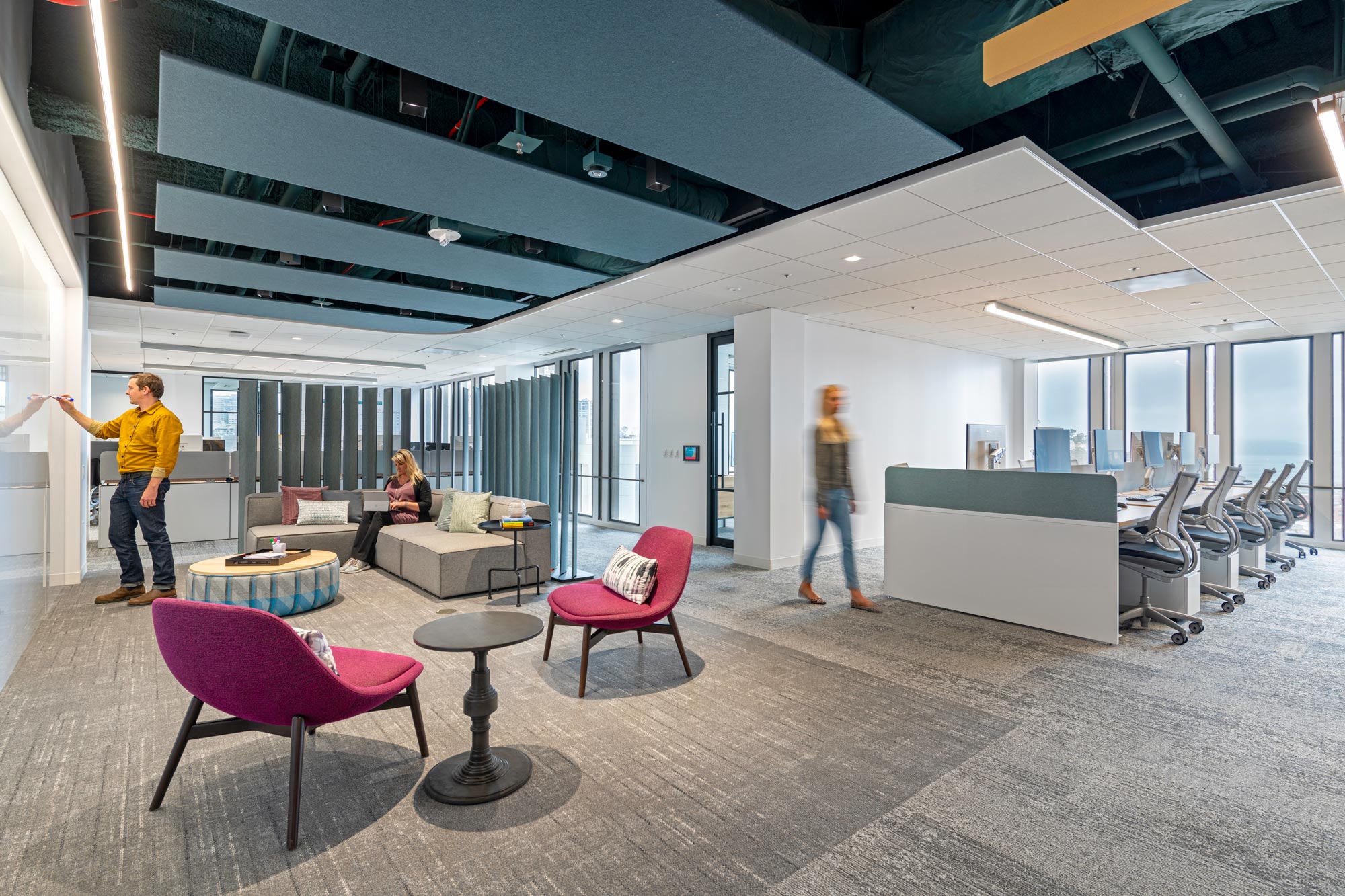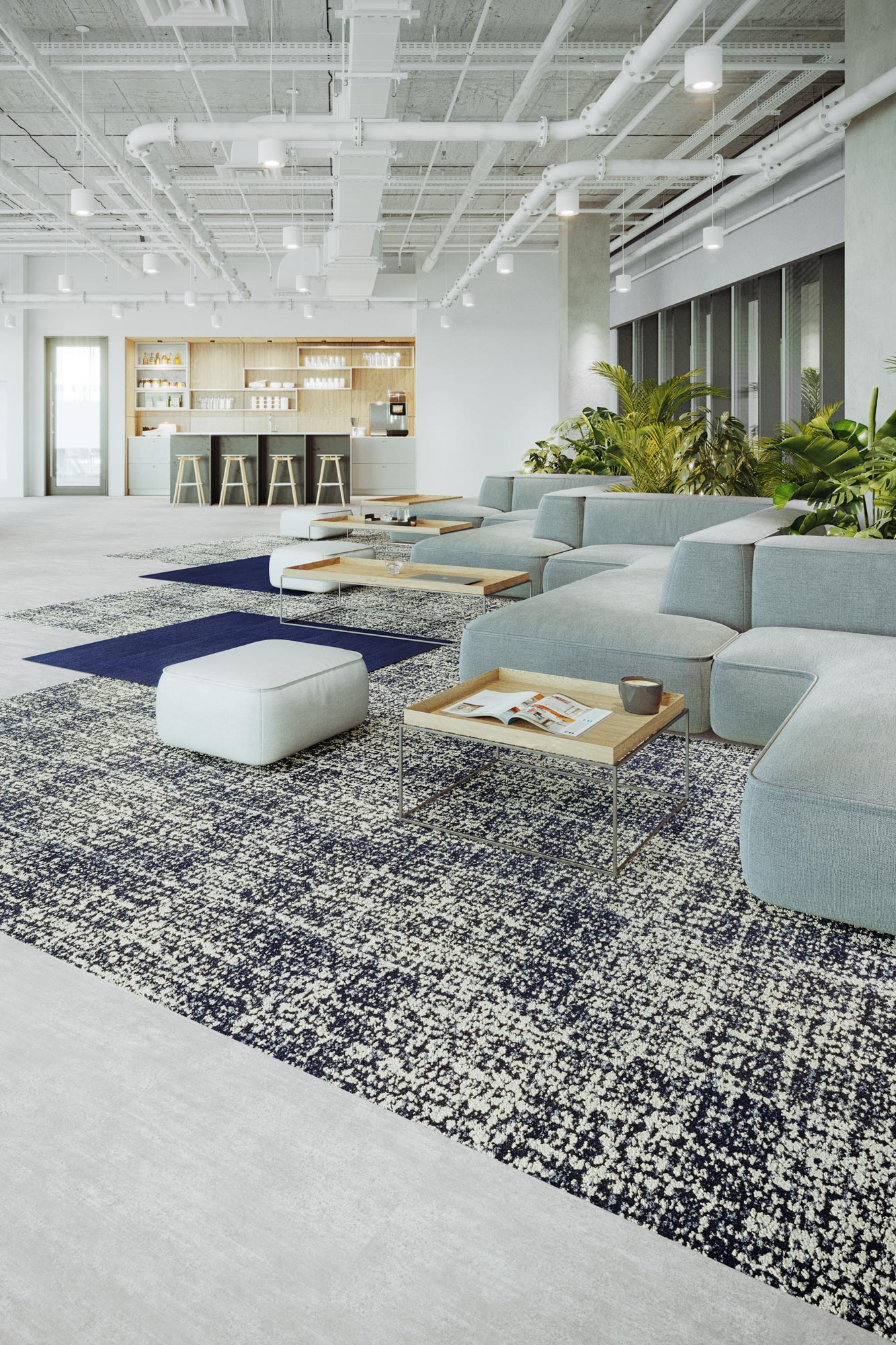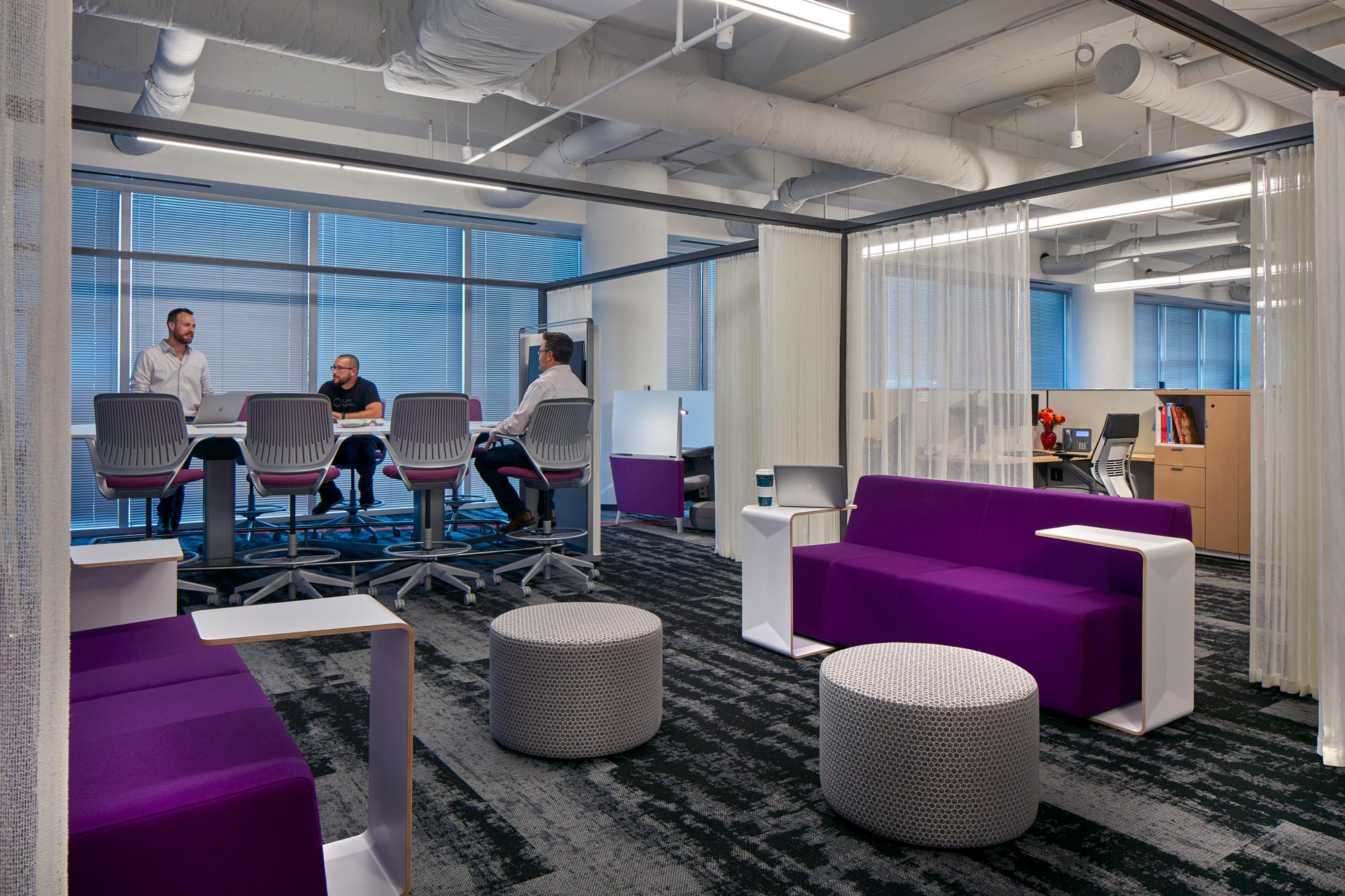Story at a glance:
- A global survey by Tarkett found that employees think of the office not only as a space for productivity but also social connection.
- The post-pandemic workplace must focus on wellness, as working from home caused a dip in employee mental health.
- Sustainability is also top-of-mind for employees, who said they want increased transparency about how companies and their offices are supporting the environment.
The alarm buzzes sometime between 6 and 7am. You get up, shower, make a pot of coffee, mentally prepare for the meetings and tasks ahead. Then you’re out the door, headed to the office, where you’ll work all day until it’s time to go home, relax, and repeat. It’s the rhythmic workweek dance, a routine so ingrained in our culture that it rarely skips a beat—that is, until a global pandemic happens.
Consistent work routines are no more; once bustling workplaces of innovation and collaboration have sat empty for more than a year, some abandoned entirely. Now as the world shifts away from work from home and back into the office, employers and employees alike are asking: Where do we go from here? What does the post-pandemic workplace look like?
Flooring and surface manufacturer Tarkett has been studying just that, interviewing 207,000 people across six continents as part of its research to find out how to build up the office to what it once was but better—a place people go to be productive, collaborate, and focus, yes, but also a place where everyone belongs and feels safe.
It’s a lofty task in an age where, as we’ve learned, life can change very quickly. So Tarkett started from the beginning. What do people actually miss about the office?
“The printer,” Leslie Thompson, director of workplace strategy at Tarkett, says with a laugh. “But also social connection. The past year has given a different look at ourselves, and attitudes have changed toward sustainability, diversity and inclusivity, and how the workplace supports that. You want the office to be that anchor where they can use the printer but also create that sense of belonging.”

Tarkett’s research found that employees want the post-pandemic workplace to not only include more independent spaces but also spaces where they can gather to create a sense of community. Photo by Jasper Sanidad, Courtesy of BCCI Construction Company
What Tarkett’s research also uncovered is that working from home—while it can give people a sense of independence and strengthen trust among teams—has also caused a sharp decline in employee wellness.
“This past year has had a really interesting impact on people. People are working 33% more and are 41% more stressed than when they went to the office,” Thompson says. “It’s not just work when you have to work from your kitchen; there are distractions, and it’s hard to juggle both. Because of that, a third of people said their mental health has suffered the most, and 35% felt work-life balance had shifted—but not for the better.”
Like the “new normal,” the “new office” should be grounded in health-prioritizing design. “We as designers need to create spaces that are more dynamic, fluid, and provide better care to people’s wants and work modes,” Thompson says. Fluidity being key. Current office environments are too locked down, Thompson says, and as a result people are restricted to working one particular way, which may not be conducive to their productivity. Open offices, in particular, are a barrier to allowing employees the space to really think about deep work. When this type of work is necessary, 42% said they would opt to work offsite or had to put headphones in to really focus.

“Employers need to look at what they are putting in spaces, and if they are encouraging health and wellness,” says Roxane Spears, vice president of sustainability at Tarkett. Photo by Jasper Sanidad, Courtesy of BCCI Construction Company
The design fix goes back to fluidity. People need a flexible post-pandemic workplace that offers spaces to connect and collaborate and also areas outside of private meeting rooms where they can work alone in peace.
For office elements that are more static, like flooring, it’s about providing comfort and encouraging movement. “If I was going to create something really flexible, I’d use a surface with underfoot comfort that supports movement and helps in flow of space,” Thompson says. “Flooring can designate collaborative spaces easily, with a change in surface material, color, or design.”
This wellness-driven design lens is what Tarkett calls “human-conscious design,” where spaces, and all of the products within them, are made with special emphasis on the people who inhabit or use them. Yet too often employers use offices as purely a branding ploy rather than thinking of the workplace as a healthy, usable space for the people inside. In fact, Tarkett’s research found that only 17% of employees thought their employers took their experiences into consideration when designing the office, with 44% saying the companies they worked for prioritized how their offices appeared to the outside world versus their own internal teams.
It’s a discouraging statistic, which is why Tarkett takes human-conscious design in its own products seriously, from beginning product development to installation. “We want to understand how people are going to use each product in a space. We want to promote health and wellness, healthy materials, and create a positive impact on people and the environment,” Thompson says.
Take Tarkett’s new Modern Refinement collection. Building on the comfort and coziness that was available when employees were working from home, the collection features three new flooring products in a muted, relaxing color palette that emphasize tactile textures and positive mental health. “We do a lot of research on how the space is going to support people and how flooring is going to support the spaces,” says Tommy Keener, senior design director at Tarkett. “We look at the type of materials and how they make people feel. Modern Refinement is all about warmth, taking the concept of comfort from home.”
The collection is also carbon-neutral and its ethos® Modular tile designs achieved Cradle to Cradle Silver accreditation, which is right on target with another employee concern: sustainability. Not only do 50% of employees want more sustainable workplaces but 44% also say employers need to do a better job educating employees about the strides they’re taking to go green, both as a company and in the office environment. In other words, what are brands doing to combat climate change? How are they designing their workplaces sustainably, and what impact does that have on the environment at large?
“If an employer is making sure employees know the office has low VOCs, that it requires a neutral cleaner, and so on—it shows employees they care about their health and wellness,” says Roxane Spears, vice president of sustainability at Tarkett. “Whether it’s at the grocery shop or looking at our clothing, all of us are looking for transparency in our lives. Now that’s spilling over to the workplace.”

Flooring and other static elements of office design can help improve the post-pandemic workplace by encouraging movement throughout the office. Photo courtesy of Tarkett
For employers, that means taking a hard look at the materials and objects that outfit a space and thinking about how they impact employee wellness, Spears says. It’s the same thing Tarkett does for their own product development.
“No matter what we do, we make sure the products that go out into the world will be able to be reused in 10 or 15 years,” Spears says. “For example, can we separate it and use the fibers and backing in different ways? Can they be ground up and reused in the backing of a future product? If we can’t reuse it, we actually take those products to a partner to use the old product as a filler. And if we can’t do that, then we need to rethink the product.”
It’s a balance between good design and sustainability, just as the post-pandemic workplace is a balance between pre-COVID offices and a total reset. Yet both are equally important. “We use a lot of recycled content in our products because we can’t keep pulling new from the earth. We need to learn to reuse and repair,” Spears says. “People are becoming more aware of sustainability, more cognizant of climate change and what kind of products they are using. The research shows people want to go back into the workplace, and have those relationships in the office, but they also want to feel safe there.”






